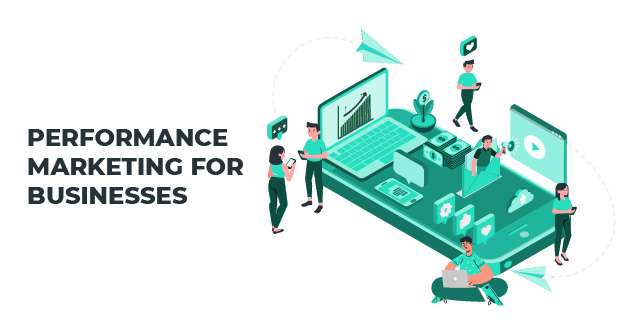
How to do performance marketing for business growth
Performance marketing for an business growth involves strategies focused on generating results and maximizing return on investment (ROI).
A structured approach to implement performance marketing:
- Define Clear Goals and KPIs:
- Identify Objectives: Determine what you want to achieve through performance marketing, such as increasing leads, improving conversions, or boosting brand awareness.
- Set KPIs: Establish Key Performance Indicators (KPIs) that align with your goals, such as cost per lead (CPL), conversion rates, and return on ad spend (ROAS).
- Target Audience Research:
- Customer Personas: Develop detailed customer personas based on your ideal clients’ demographics, behaviors, pain points, and motivations.
- Keyword Research: Conduct thorough keyword research to understand what potential clients are searching for related to IT services. Use this insight to optimize your campaigns and content.
- Content Strategy:
- Educational Content: Create informative content that addresses common challenges and questions your target audience has about IT services. This helps build credibility and trust.
- Case Studies and Success Stories: Showcase past projects and client success stories to demonstrate your expertise and capabilities.
- Paid Advertising Campaigns:
- Google Ads: Utilize Google Ads to target specific keywords related to IT services. Optimize ad copy and landing pages to improve Quality Score and ad relevance.
- Social Media Ads: Platforms like LinkedIn and Facebook offer robust targeting options to reach decision-makers in businesses looking for IT solutions.
- Conversion Rate Optimization (CRO):
- Landing Page Optimization: Design clear, compelling landing pages that align with your ad messaging and encourage conversions.
- A/B Testing: Continuously test different elements of your ads and landing pages (such as headlines, CTAs, and imagery) to optimize for higher conversion rates.
- Email Marketing:
- Lead Nurturing: Develop automated email sequences to nurture leads through the sales funnel. Provide valuable content and personalized offers based on their interests and behaviors.
- Drip Campaigns: Send targeted emails to prospects who have shown interest but haven’t yet converted, focusing on providing additional value and overcoming objections.
- SEO and Content Marketing:
- Optimized Website: Ensure your website is optimized for search engines with relevant keywords, technical SEO best practices, and high-quality content.
- Blogging and Thought Leadership: Publish regular blog posts and articles that demonstrate your expertise in IT services. This helps attract organic traffic and positions your brand as an industry leader.
- Analytics and Performance Monitoring:
- Tracking and Reporting: Use tools like Google Analytics and marketing automation platforms to track campaign performance against KPIs.
- ROI Analysis: Regularly analyze the ROI of your marketing campaigns to identify what’s working well and where adjustments are needed.
- Continuous Optimization:
- Data-Driven Decisions: Use insights from analytics and performance reports to make data-driven adjustments to your campaigns.
- Stay Updated: Keep abreast of industry trends, algorithm changes, and competitor activities to refine your strategies and maintain a competitive edge.
- Relationship Building and Referral Programs:
- Client Referrals: Encourage satisfied clients to refer others to your IT services through referral programs or incentives.
- Networking: Participate in industry events, webinars, and online communities to expand your network and build relationships with potential clients and partners.
By implementing above strategies and continuously refining your approach based on data and insights, you can effectively do the performance marketing for your business and achieve sustainable growth.


